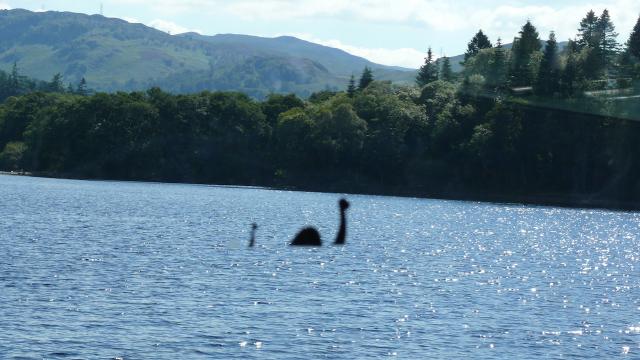UFOs. Big Foot. The Loch Ness monster. All mythologies that have propagated to explain the unexplained, the things modern science can’t quite justify or illuminate.
A Nessie sighting. Image: Wikimedia
Now one New Zealand researcher hopes to use science to shed light on the lore. Neil Gemmell is a geneticist at the University of Otago whose lab focuses on ecology and conservation. His group uses what’s known as environmental DNA to monitor marine biodiversity, which with a few litres of water allows them to detect traces of thousands of species. The same technique, he proposes, might be used to determine whether Scotland’s Loch Ness has anything unusual swimming around in it — say, for example, a mysterious giant monster.
“Environmental DNA works very well in aquatic environments,” Gemmell told Gizmodo. “If there is something really different about Loch Ness, this technique would find it.”
The Loch Ness monster, more fondly referred to as Nessie, is an aquatic creature which reportedly inhabits a lake called Loch Ness in the Scottish Highlands. Mentions of a monster in the vicinity first appeared in the sixth century, but it was brought to popular attention in 1933 after a couple reported seeing “a most extraordinary form of animal” cross the road in front of their car. Evidence of its existence, though, has remained largely anecdotal, reliant on a few heavily disputed videos, photos and sonar images. Various hypotheses suggest instead that it might be an optical illusion, seismic gas or fermenting tree trunks. Still, every so often both scientists and hobbyists revisit the lake, trying out the latest techniques in hopes of determining once and for all whether there’s a shy monster hiding somewhere at the bottom of the lake.
Environmental DNA works because all large organisms lose cells as they move through their environment. If Nessie is in fact real, no amount of stealthiness could hide its DNA from showing up in such a test.
The study Gemmell has proposed would involve gathering water samples from multiple locations at different depths of Loch Ness, then analysing them using similar techniques to those used at crime scenes, scanning for bits of animal DNA and then working to identify it. The DNA data would be compared to large sequence databases that catalogue the majority of known living things. If something turned up that had not been previously identified, the test would single it out. Comparing that DNA to other species might even give researchers a hint of Nessie’s closest relatives.
All this is not to say that Gemmell thinks the study would actual turn up evidence of the Loch Ness monster — or that negative results would end the hunt for proof of its existence. And even if unusual DNA did turn up in a sample, that’s not to say it’s necessarily the Loch Ness monster. Scientific inquiry often has a habit of suggesting more questions than answers.
Gemmell proposed the idea on Twitter, as a conversation starter about the merits of environmental DNA. After receiving much interest in the idea though, he plans to seek funding for the study and actually give it a shot.
“I’m a sceptic. My guess is that there isn’t anything really different about Loch Ness,” he said. “But it’s been an interesting conversation starter.”
